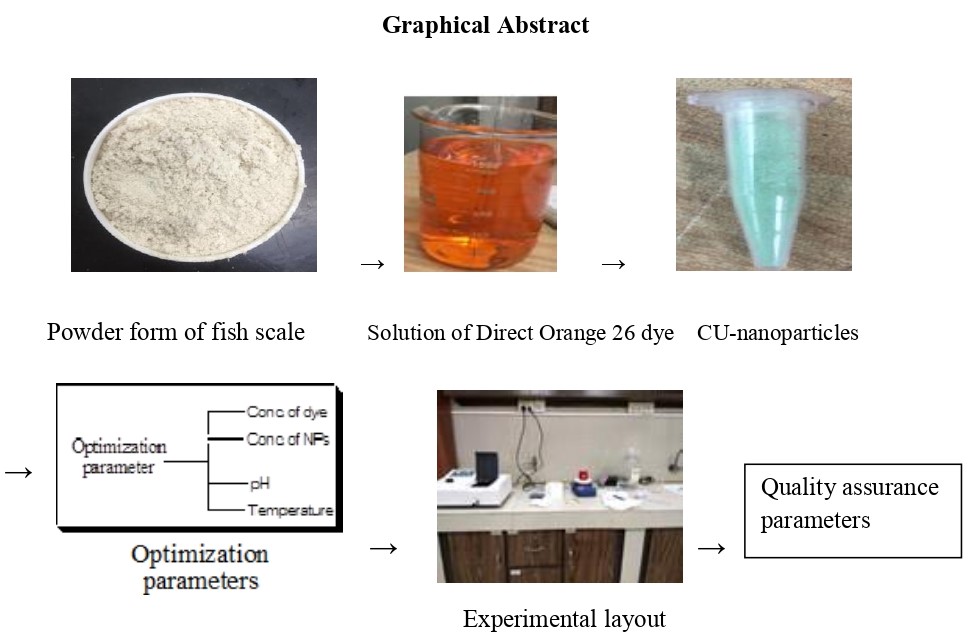
The performed work reports the manipulation of a collective local surplus solid (fish scales of tilapia) for the synthesis of copper nanoparticles. The technique was so customary to establish to be green, clean for the environment, and less expensive. Copper nanoparticles were synthesized using tilapia fish scales and were characterized using SEM and XRD. The synthesized copper nanoparticles were used for the remediation of direct orange 26 dye. The maximum remediation (90.2%) was noted at 0.01 g/L concentration of dye, 0.001 g/L of Cu NPs, pH 8, at 40oC. The value of TSS for the untreated solution was found 0.447 mg/L while for the treated solution it was 0.40 mg/L. Similarly, the value of TDS for the untreated solution was found to be 22.35 mg/L while, for the treated solution it was 20 mg/L. The COD and TOC were determined to be 84.54% and 86.76%, respectively. All the data were analyzed statistically. The current study inferred that copper nanoparticles using tilapia fish scales which are a bio-waste material could be successively used for the detoxification of other dyes as well.
Total file downloads: 5